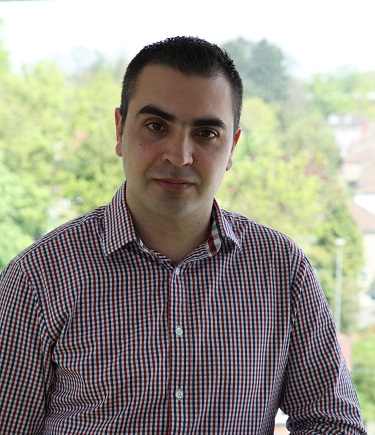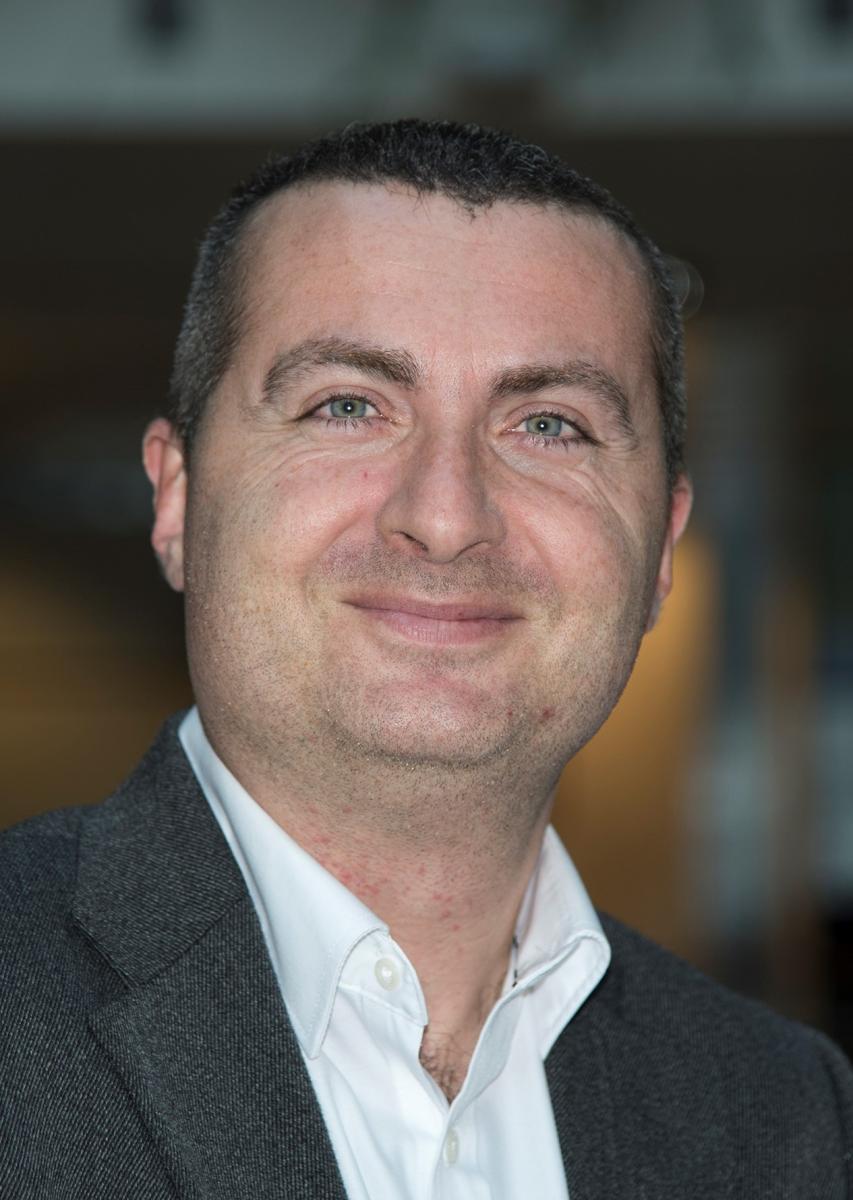Plenary session
The plenary session is scheduled for Wednesday morning, 19th September (Main Hall) and will consist of a series of outstanding talks:
09:00: Introduction - Conference chairpersons
09:10: Welcome address by Prof. Rajmund Bacewicz, Vice Rector for Research of the Warsaw University of Technology
09:15: Welcome address by George Kiriakidis, E-MRS President
09:30: Laudatio by Anke Weidenkaff and Presentation of the Jan Czochralski Award to Prof. Herbert Gleiter
09:45: Lecture by Herbert Gleiter, The Research Centre Karlsruhe (INT), Germany

“Nano-glasses: The Way to a World of New Materials with New Structures and Technological Applications”
Today’s technologies are based primarily on utilizing crystalline materials such as metals, semiconductors or crystalline ceramics. The reason for this preference of crystalline materials is that their properties can be varied by varying their chemical compositions (by alloying, doping) and/or by varying their microstructures by means of introducing microstructural defects such as inter-crystalline interfaces, dislocations and/or point defects. In the late 1970s the variation of the properties of crystalline materials by introducing a very high density of defects opened the way a new class of materials: nano-crystalline materials. This new approach was confirmed by the rapidly growing number of subsequent studies. Today more than 800 papers are published in this area every year, several international conferences are organized annually and most (national as well as international) conferences in the area of Materials Science have one or several sessions on “nano-materials”.
The way to a new world of technologies based on non-crystalline materials may be opened by means of nano-glasses. Nano-glasses consist of nanometer-sized glassy regions connected by (nanometer-wide) interfacial regions with atomic and electronic structures that do not exist in melt-cooled glasses. If the size of the nanometer-sized glassy regions is 5 nm or less, the volume fraction of these interfacial regions is 50% or above. Due to their new atomic/electronic structures, the properties of nano-glass differ from the corresponding properties of melt-cooled glasses. For example, FeSc nano-glasses were (at 300K) strong ferro-magnets although the corresponding melt-cooled glasses were paramagnetic. Similarly, the ductility, the biocompatibility, the catalytic properties of nano-glasses were improved by up to several orders of magnitude. Moreover, nano-glasses open the way to new kinds of alloys as they permit the alloying of components that are immiscible in crystalline materials. This applies to components with the same as well as different kinds of chemical bonds. Nanoglass alloys of Fe90Sc10 and Cu64Sc36 glasses are an example of two metallic components (Cu and Fe) that are immiscible in the crystalline state. Alloys of metallic Fe90Sc10 glasses and SiO2 glasses are nano-glass alloys of the second type.
Just like in the case of nano-crystalline materials, the properties of which may be changed by varying the sizes and/or chemical compositions of the crystallites, the properties of nano-glasses may be controlled by varying the sizes and/or chemical compositions of the glassy clusters. This analogy opens the perspective that a new age of technologies - a ”glass age”- may be initiated by utilizing the new properties of nano-glasses and modifying their properties by varying the sizes and/or chemical compositions of the glassy clusters.
H.Gleiter, Small 12, 2016 2225-2233
10:30: Lecture by Professor Veena Sahajwalla, Centre for Sustainable Materials Research & Technology (SMaRT@UNSW), Australia
 "The Science of Microrecycling: Selective Synthesis of Materials from Waste"
"The Science of Microrecycling: Selective Synthesis of Materials from Waste"
The scarcity of raw materials is increasing rapidly. Population increase and changes in consumption patterns combined with the inefficient use of materials push us toward a crisis point. There are many reasons for the current drive for more sustainable industrial processes, including a desire for enhanced social value, lower-energy demand, less waste, and more effective products. To achieve stable long-term growth, something will have to change—and perhaps a new approach based on the materials themselves can help. A new concept for distributed recycling based on “Microrecycling” can transform waste into value-added materials.
In conventional recycling, we convert like for like, using glass or plastics to make more of the same. Electronic waste (e-waste) presents a different challenge: its complex parts cannot simply be piled into a giant processing machine and converted back into their original form. Much of this waste ends up in the developing world, where regulation is negligent. A significant proportion of problematic e-waste is also landfilled and stockpiled. In this situation, how can we make sense of this complexity?
The SMaRT Centre focuses on discovering innovative ways of transforming waste streams sustainably to create valuable resources by selective synthesis of materials from waste. We created micro-factories (as small as 50 m2) for local application in both advanced and developing economies, where metals and ceramics could be synthesised from e-waste without toxic emissions. The technical barriers of conventional e-waste recycling process can be overcome through “Microrecycling”. Recent research at the SMaRT Centre has proved that the waste processing in small-scale -“Microrecycling”-, enable small operators to convert their waste to value-added materials simultaneously taking the pressure off landfills.
Recovering copper and other metals from electronic waste aren’t just sustainable; it’s actually more concentrated form in e-waste than in metal ores. The amount of copper found in one ton of printed circuit boards is 10 – 20 times more than that available in one metric ton of copper ore (1). Electronic waste also contains significant amounts of precious metals such as gold, silver, etc. For example, compared with natural gold ores, the gold content in e-waste is significantly higher (more than 20 times (2)), creating an economic driving force for the recycling of electronic waste.
Full abstract available HERE
11:15: Lecture by Professor Themis Prodromakis, Electronic Materials & Devices Research Group, Zepler Institute, UK
 “Harnessing the power of the brain with metal-oxide Memristors”
“Harnessing the power of the brain with metal-oxide Memristors”
Recent advancements in nanotechnologies and smart materials have prompted the creation of a new class of devices that compared to conventional CMOS transistors, are capable of achieving ‘more’ functionalities (e.g. multi-bit operation) for ‘less’ energy/space. The ability of memristors to act as electrically tuneable multi-level, non-volatile resistive loads, combined with their inherently scaling-friendly, low power and back-end integrable fabrication processes has rendered them a highly promising candidate for use in emerging memory technologies. Nonetheless, memristive technologies have much more to offer; making the rich landscape of modern electronics design even more diverse. During this talk, I will present how memristive technologies can be exploited in several practical applications from neuromorphic systems to charge-based computing and even enabling bioelectronics medicines.
Brief Biography
Prof Prodromakis is Professor of Nanotechnology and Head of the Electronic Materials and Devices Research Group in the Zepler Institute, University of Southampton, UK. He is recognized as a pioneer of metal-oxide Resistive Random-Access Memory technologies and is leading an interdisciplinary team comprising 10 researchers with expertise ranging from materials process development to electron devices and circuits and systems for embedded applications. He holds an EPSRC Fellowship, a Royal Society Industry Fellowship and is a Visiting Professor at the Department of Microelectronics and Nanoelectronics at Tsinghua University, CN and Honorary Fellow at Imperial College London. He is Fellow of the IET, Fellow of the Institute of Physics, Senior Member of the IEEE and serves as the Director of the Lloyds Register Foundation International Consortium for Nanotechnology (ICoN: www.lrf-icon.com). In 2015, Prof Prodromakis established ArC Instruments Ltd, a start-up that delivers high-performance testing infrastructure for automating characterisation of novel nanodevices.
12:00. Lecture by Dr. Ennio Capria, NFFA
 “Presentation of the NFFA - Europe project”
“Presentation of the NFFA - Europe project”
